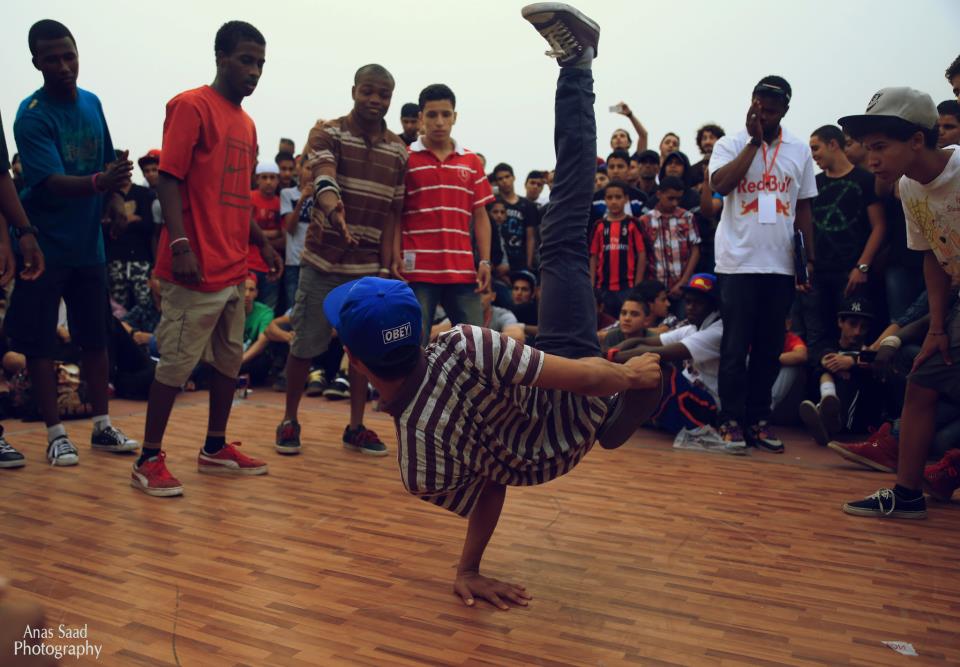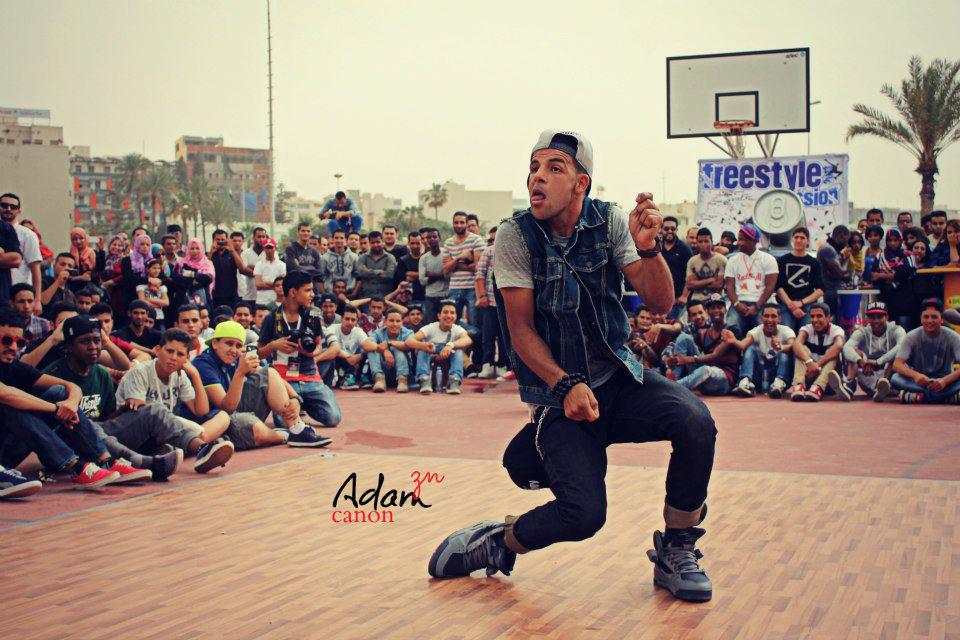By Nihal Zaroug.

(Photo: Anas Saad)
Tripoli, 1 May 2013:
Last Thursday, a battle was fought among Libyan youth, but it was unlike other fights, as . . .[restrict]the winners went home with trophies and a cash prize. On the floor, break, hip-hop and parkour dancers gave it their all, as judges watched and the crowd cheered.
Several dance groups, more commonly referred to as crews, participated in Freestyle Session Tripoli 2013, a dance competition organised by local dance veterans Nour Enbaya and Ahmed Haddad.
The event could have not been “any better”, Enbaya told the Libya Herald. “The atmosphere was fantastic and many families came along.” Seven breakdance crews – known as b-boying – five hip-hop crews and 25 solo acts competed for a chance to win LD 400 as the top prize.
After five attempts by Enbaya and Haddad to land a sponsor had failed, the determined pair’s sixth plea was successful. The event would not have been the same without Red Bull, says Enbaya. It provided the cash prize, refreshments, umbrella stand, stage and helped complete the overall look of the competition.
This year alone, Enbaya has been involved with four other contests, but he says that Thursday’s battle was by far the best and “even had freestyle basket ball and some skateboarders take part.”

See photos of the competition posted on the organisers Facebook pages, and you will find yourself asking: “Is this in Libya?” Not because it is unconceivable that such an event could take place in the country, but because street dancing remains a subculture.
Pre-revolution, dance events were held but not as frequently and with less fanfare, states Enbaya. The ability to use social media to promote gatherings and the freedom to organise contests unbridled has helped this genre of dance become more appealing to youth.
Asked if street dance was becoming conventional, Enbaya said “singing and rapping is more mainstream but b-boying is still underground. It’s a newer culture”. However, he believes this will soon change. Even when “b-boyers” practiced on the streets, he said, more people gathered to watch.
Social constraints have made this form of entertainment essentially for males. Although some crews have one or two token female dancers, they are typically younger and do not continue on to progress with their teammates. “It is difficult for many individuals to see and accept girls dancing in public, this will only be resolved with time. It is a sport in the end”, says Enbaya. [/restrict]










